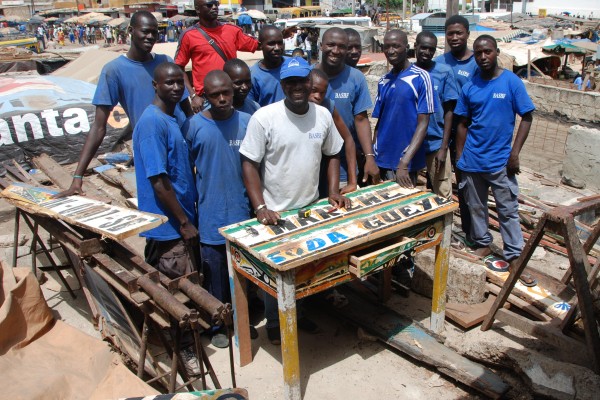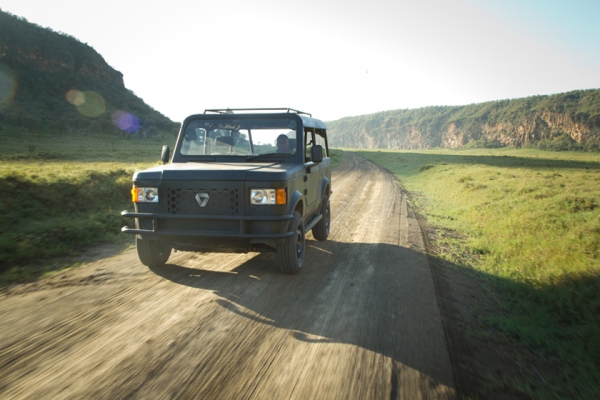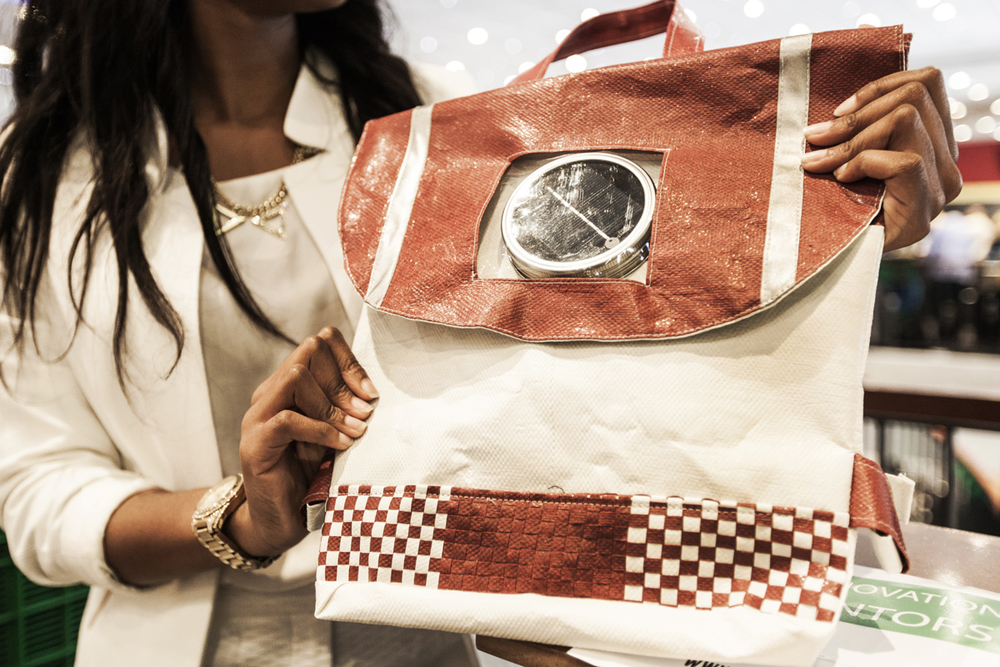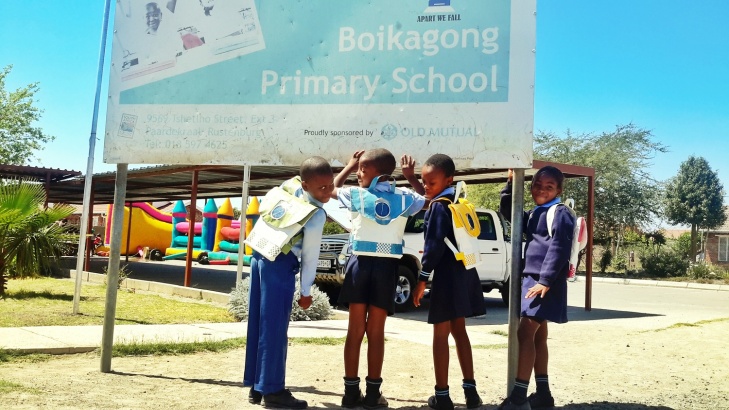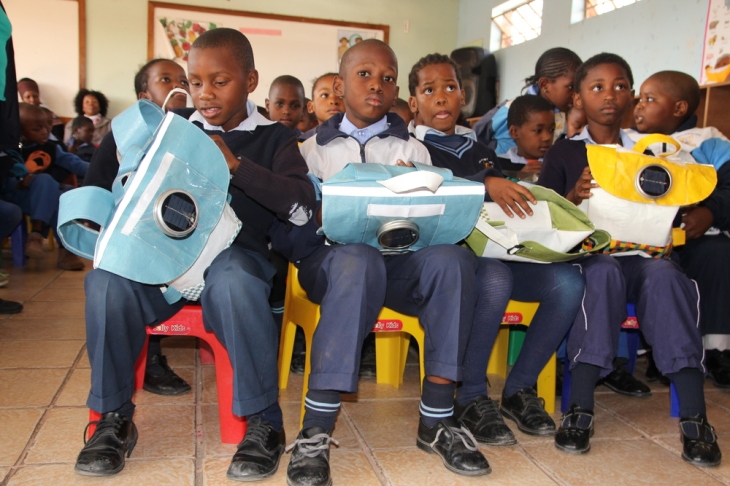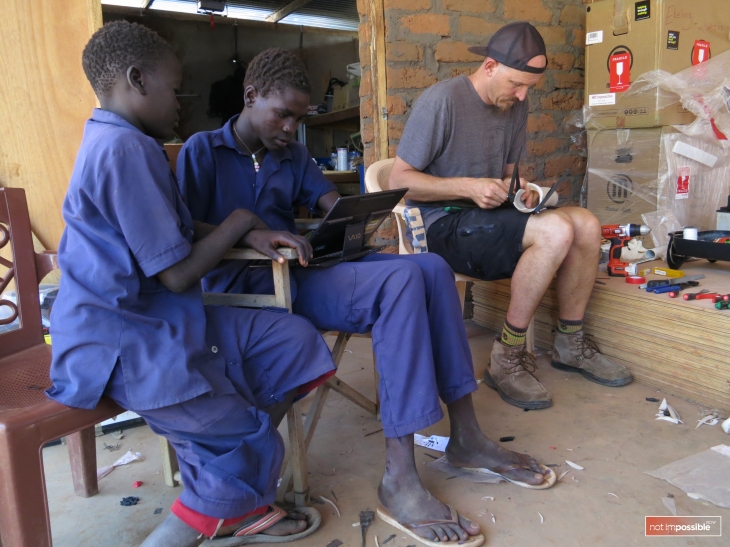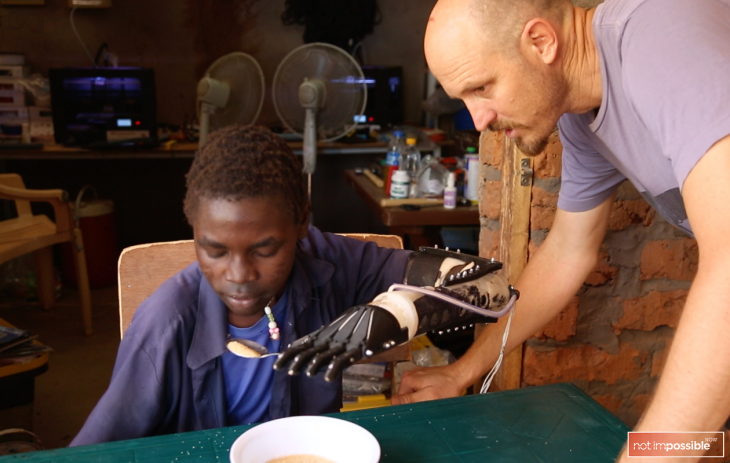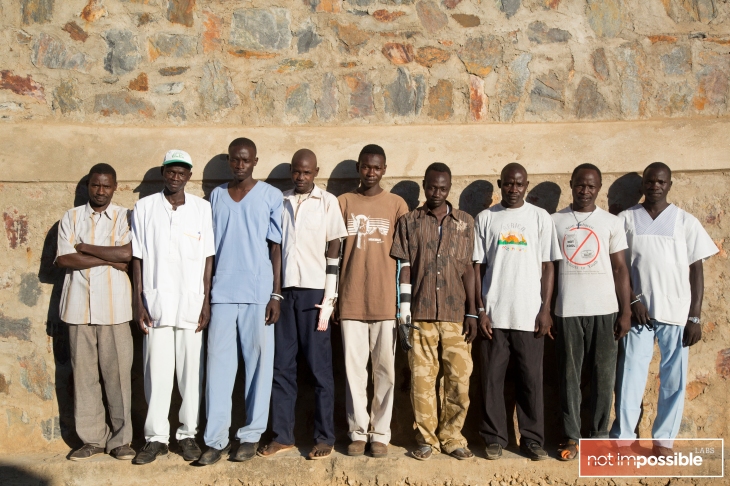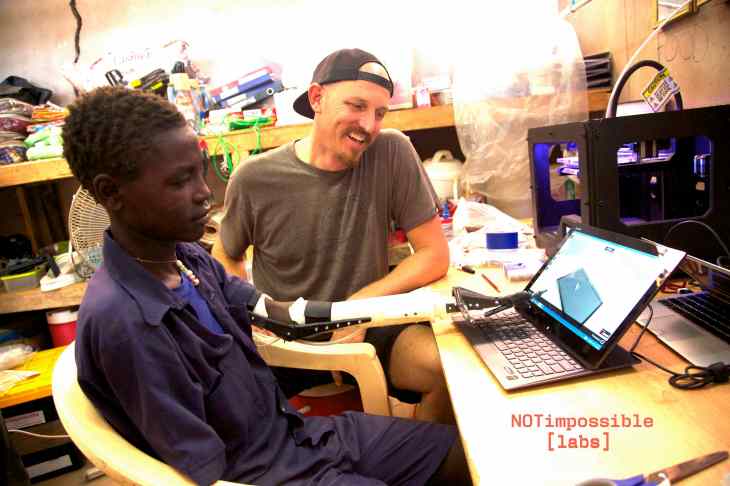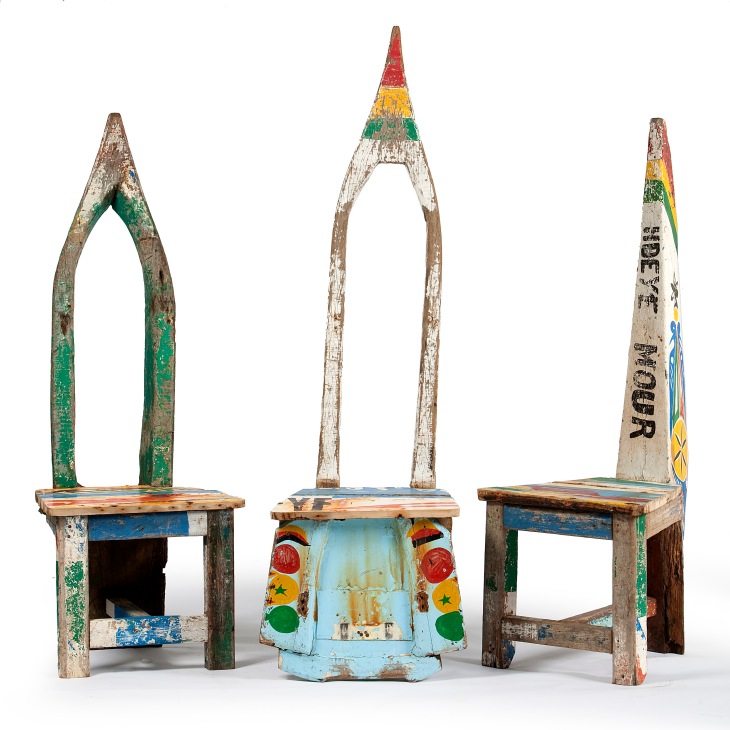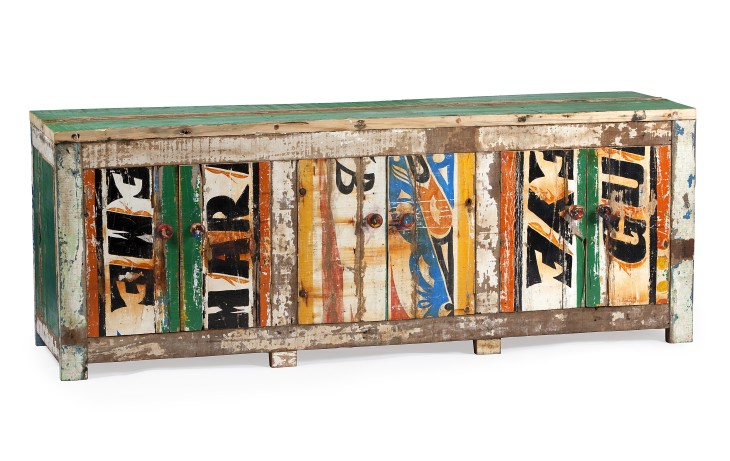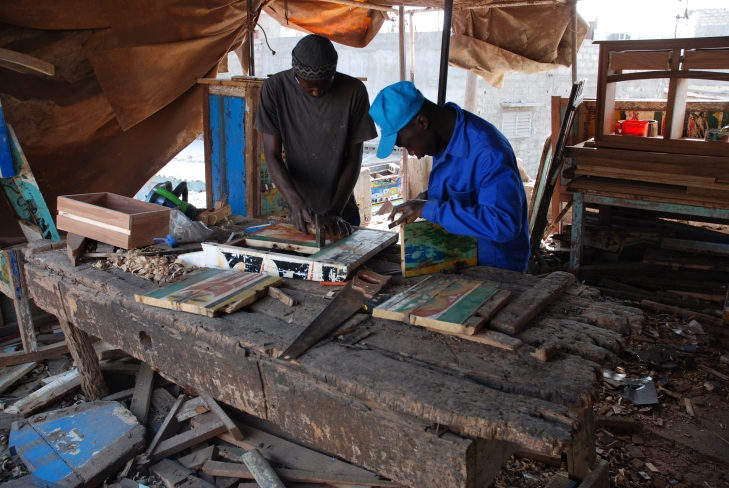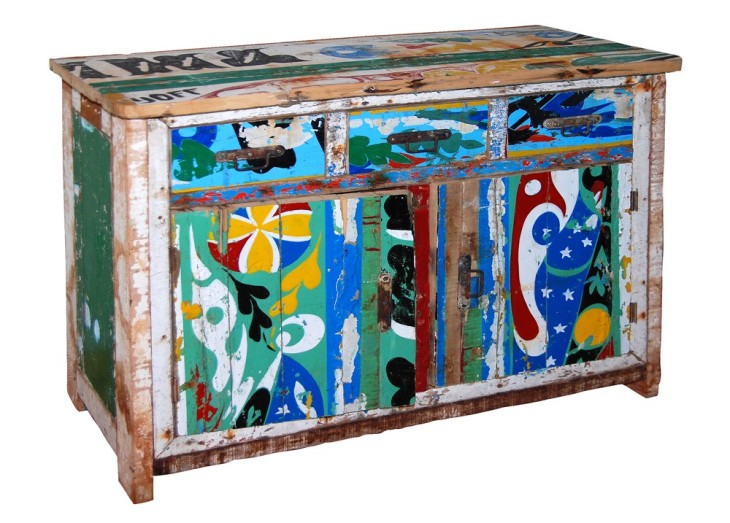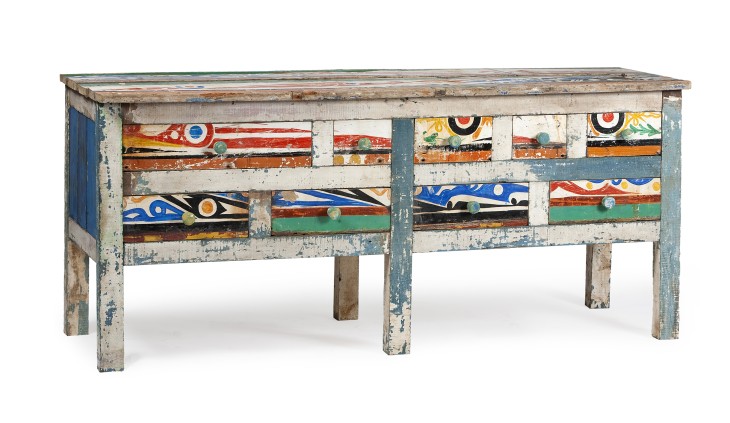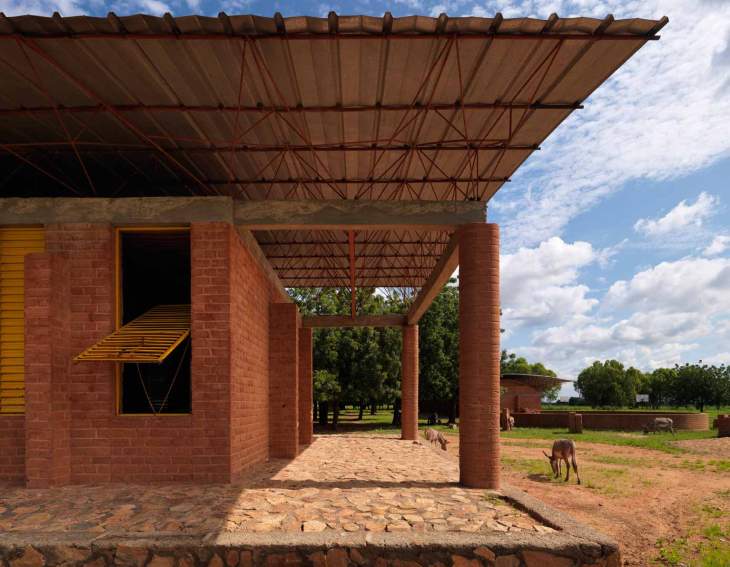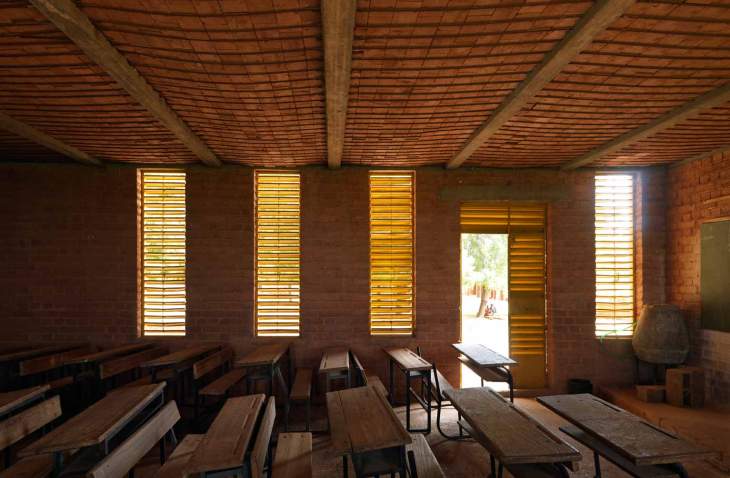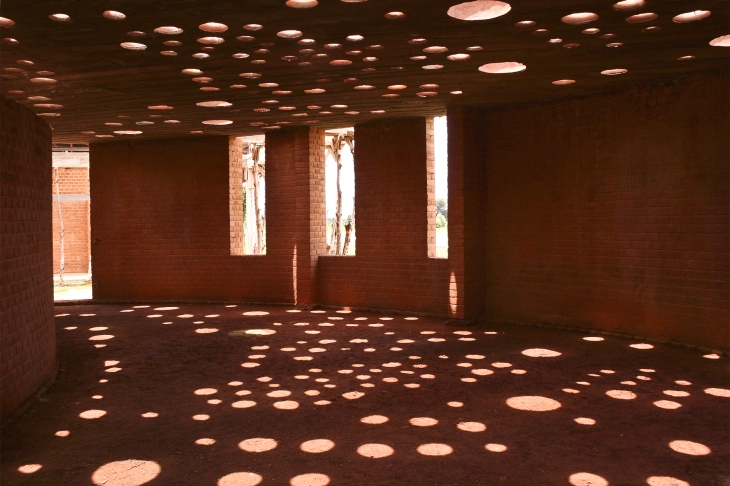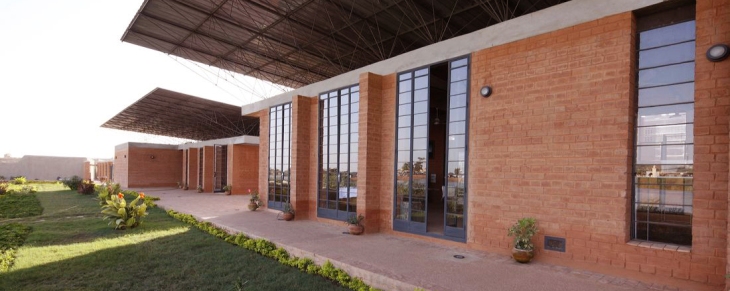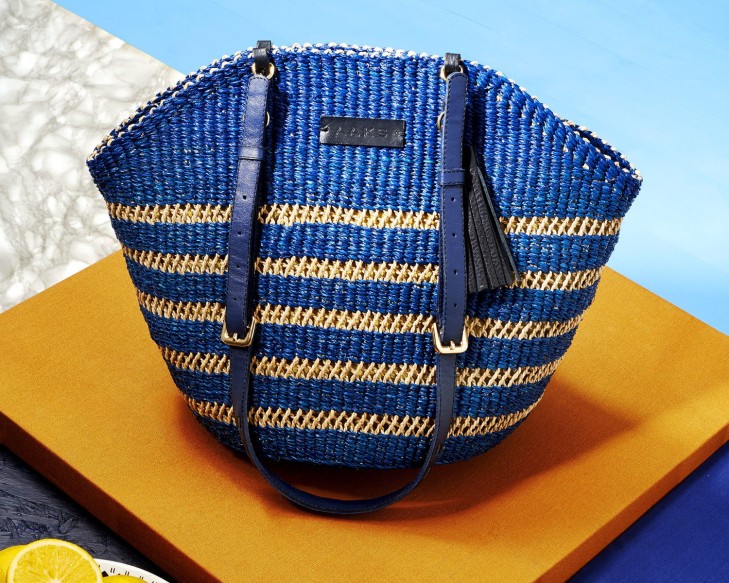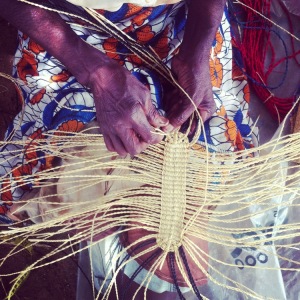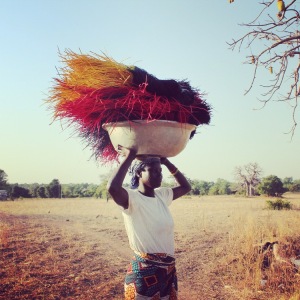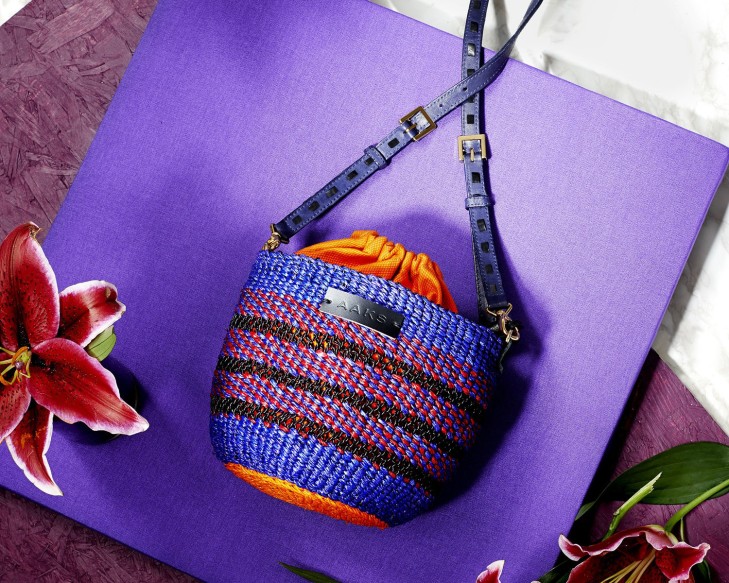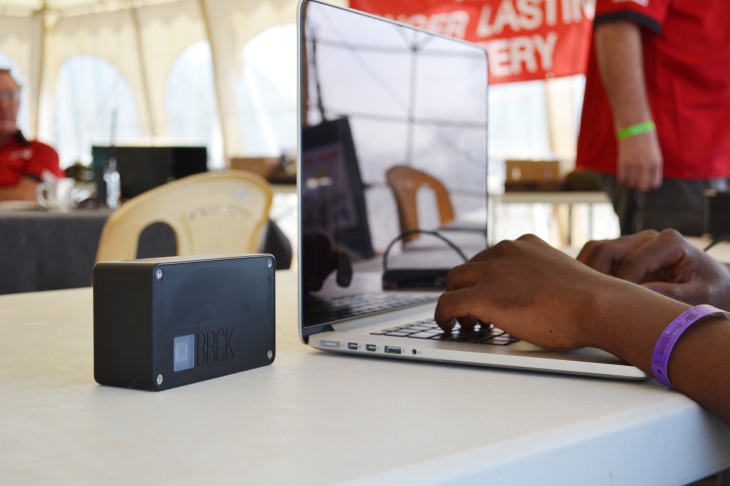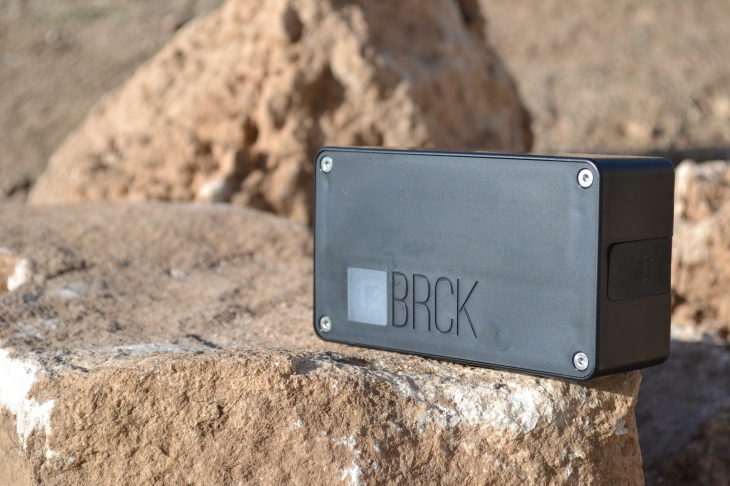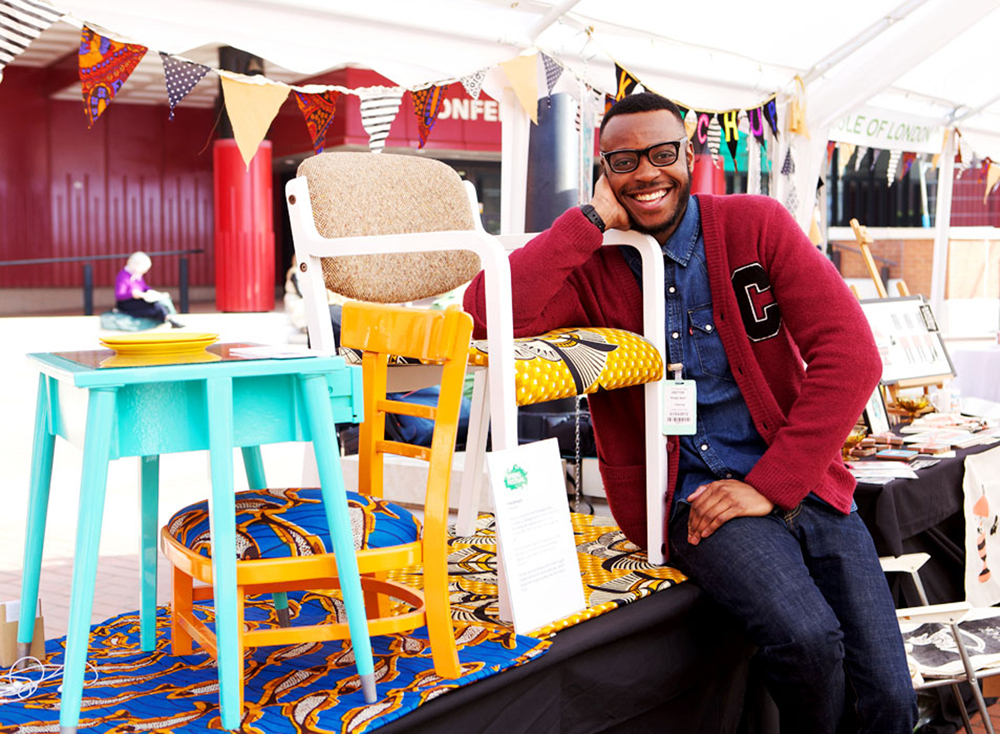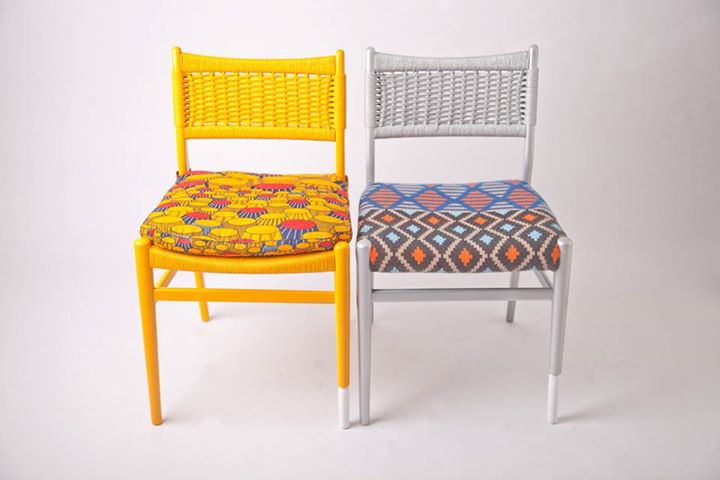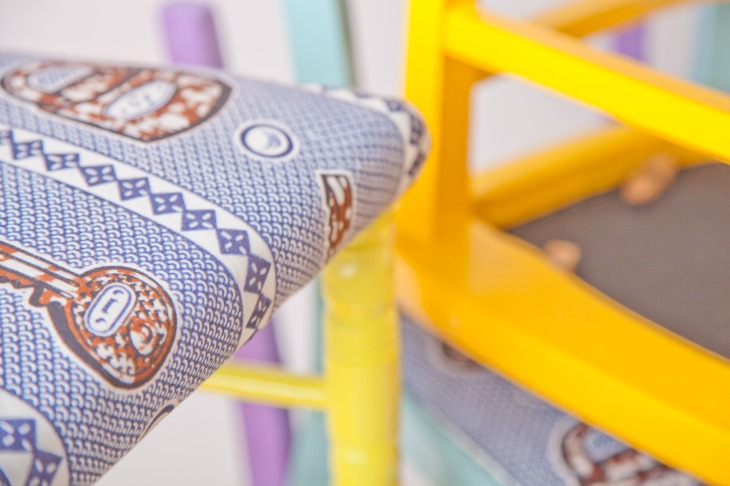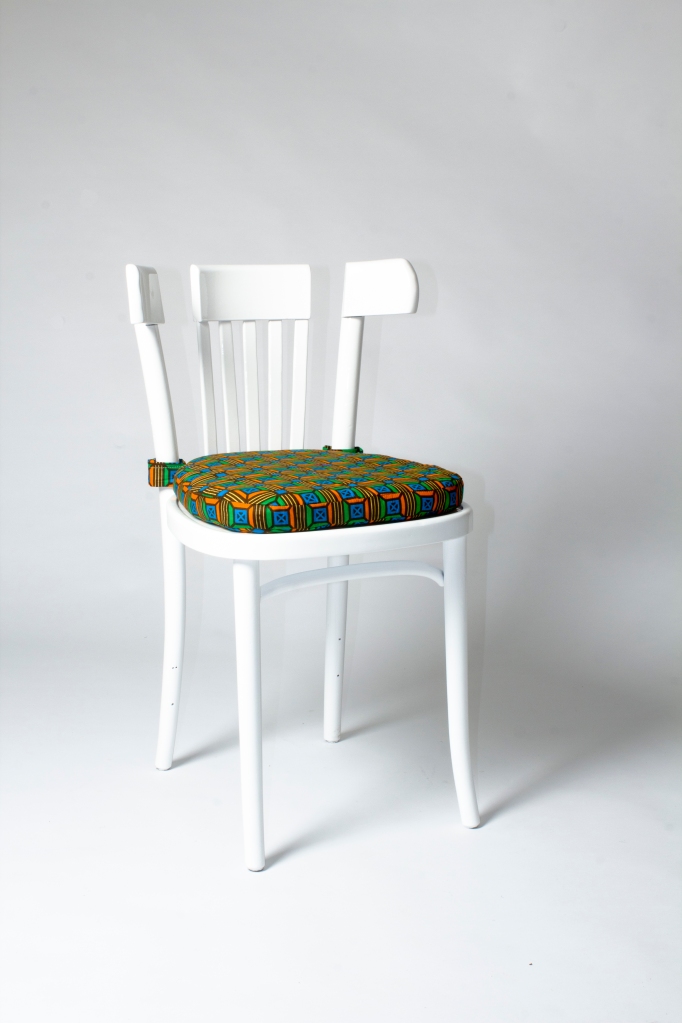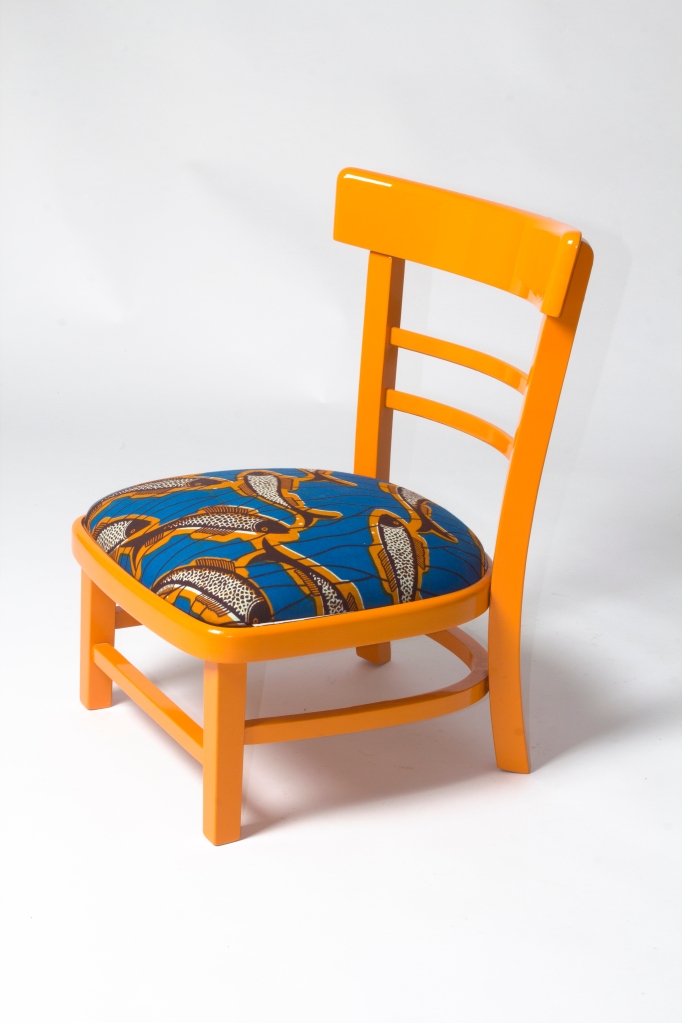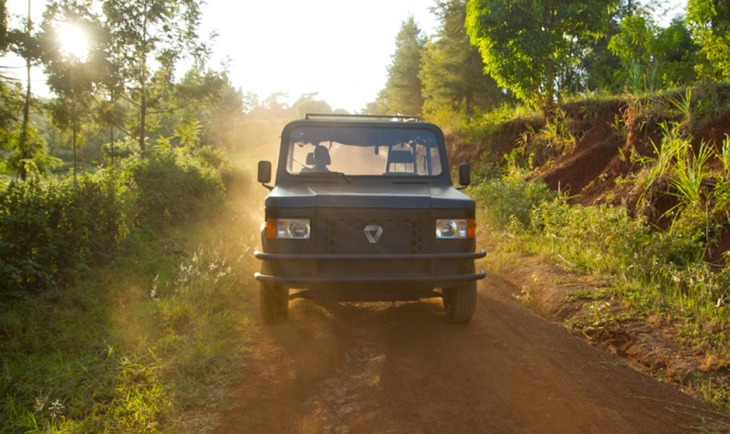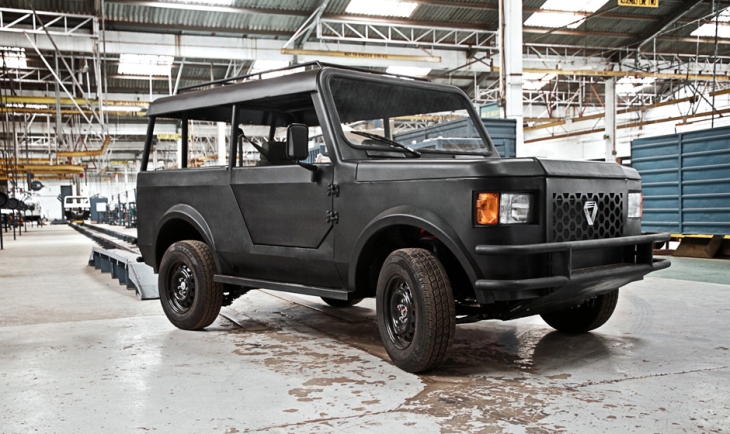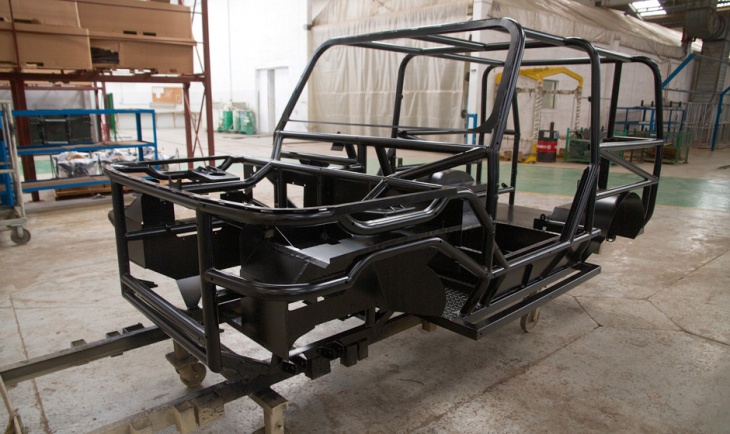South African upcycled solar satchels
Repurpose Schoolbags, from all-female South African green innovation start-up Rethaka, is a line of recycled school satchels that double as solar lamps – a multi-faceted product designed to address multiple problems that face African communities.
Problem number one. Light.
Across rural Africa, many households struggle to light their homes. Electricity is sparse (or at best, unreliable) and most families cannot afford to use kerosene burning lamps on a regular basis. Without lights at home, children can’t study after dark, which, as you’d expect, is a significant handbrake on their learning and development.
With the Repurpose Schoolbag, Rethaka founders Thato Kgatlhanye and Rea Ngwane have designed an innovative and elegantly simple solution to this problem, taking inspiration from the daily routine of schoolchildren in their hometown of Rustenburg. The Repurpose Schoolbag has an integrated solar panel, which charges up while the owner carries the satchel around in the daytime. Then, in the evening, the panel transforms into a solar lantern, providing light for the children in the household to do their homework after dark. With up to 12 hours output from a full charge, this solar lantern is a reliable, affordable and eco-friendly alternative to kerosene burning lamps.
Problem number two. Safety.
For children in rural areas, getting to school safely can be dangerous. Many kids have to make the long walk to school before dawn, along poorly-lit roads where they are barely visible to drivers. The Repurpose Schoolbag incorporates retro-reflective materials that make the wearer easier to spot in low light and therefore safer on their walk to school.
Problem number three. Plastic.
Many African countries lack an effective infrastructure for managing waste, so used and discarded plastic products tend to end up strewn along roadsides and coastlines. This isn’t just an environmental hazard, it’s an economic one, costing developing countries an estimated $1.27 billion a year in lost revenue for the fishing, shipping and tourism industries.
But, Rethaka are doing their bit to change things. Each Repurpose Schoolbag is made from 20 recycled plastic bags, which are sanitised and bonded into a high-quality, durable, waterproof textile. Even the off-cuts of the plastic textile are integrated into the bag’s design so no new plastic waste is generated in the assembly process.
This innovative and multi-faceted venture is a great example of private enterprise stepping up to tackle social infrastructure challenges that African governments are not engaging with. And recycling is one area where private African ingenuity is flourishing, with a number of inspiring waste recycling projects springing up across the continent, including QAMP, a community of makers repurposing e-waste in Ghana’s Agbogbloshie (the world’s largest waste electronics dump). And it’s perhaps with this fertile environment for their ideas in mind that Rethaka are looking to expand Repurpose Schoolbags to another three African countries in the next five years.
Rethaka delivers Repurpose Schoolbags to the children in rural communities who need them by pairing corporate and individual donors with disadvantaged schools. To learn more about their work or to support their efforts, visit http://www.repurposeschoolbags.com.
All photographs courtesy Rethaka. Images copyright Roxy Klein.

